#that took forever to find
Explore tagged Tumblr posts
Text
The mcc skins do be slaying tho-

Day 51 — SINCE WHEN GRIAN HAS THIS SKIN?????

LIKE OMG LOOK AT HIM SO WHOLSOME AND AESTHETIC LIKE OMG
#grian#grian fanart#mcyt#purrrrplecats was here#mcc#mcc 16 i think#ima go check#no#27?#noooooo#im going 14#mcc 22#finally#that took forever to find
983 notes
·
View notes
Text


NUNO GALLEGO & FERNANDO LINDEZ Elite 8.06 "I Belong to No One"
#nuno gallego#fernando lindez#elite#eliteedit#elite netflix#*#👣#took me forever to find this scene lol
4K notes
·
View notes
Text


i really need everyone but especially anyone who romanced gale with a bard tav to know about this interaction from early access that larian took from us
#baldur's gate 3#gale dekarios#gale x tav#bg3#gale of waterdeep#oc: elenion silverdew#otp: you put the stars to shame#i'm putting this in my tags for gale and my tav because i need to remember it forever okay#literally as soon as i first met gale and he said he liked poetry i was like 'omg i wish a bard could say something about that'#and then months later i find out how to roll back the game to EA. and i play it.#and i find out BARDS *COULD* SAY SOMETHING ABOUT THAT#AND THEY TOOK IT AWAY FROM ME?!?!?#will never forgive larian for this actually#because this dialogue is literally so cute and i don't see any good reason for removing it#i still headcanon that gale and elenion bond over poetry and that this basically happens anyway though 💜
1K notes
·
View notes
Text
Fantasy Guide to Interiors
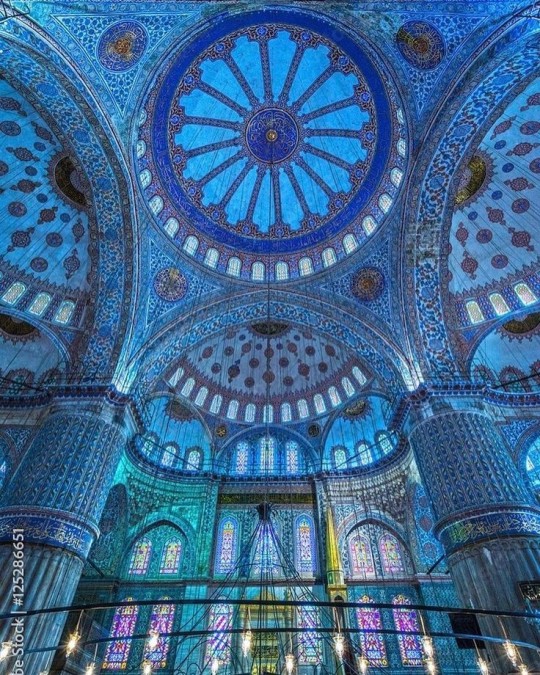


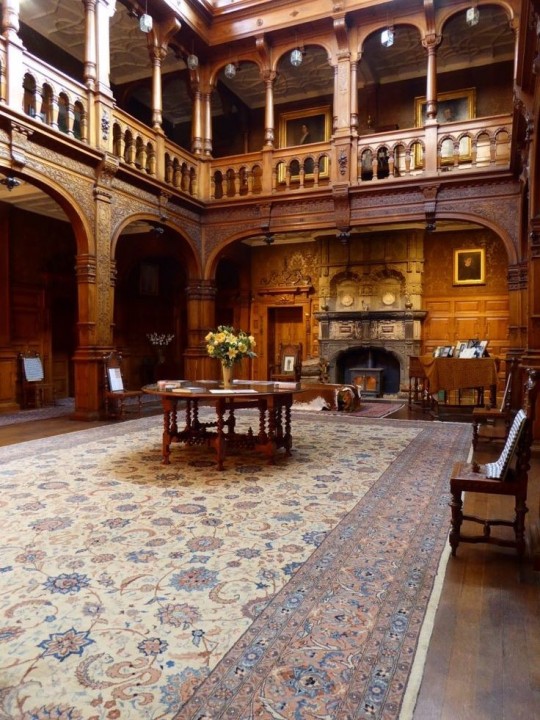
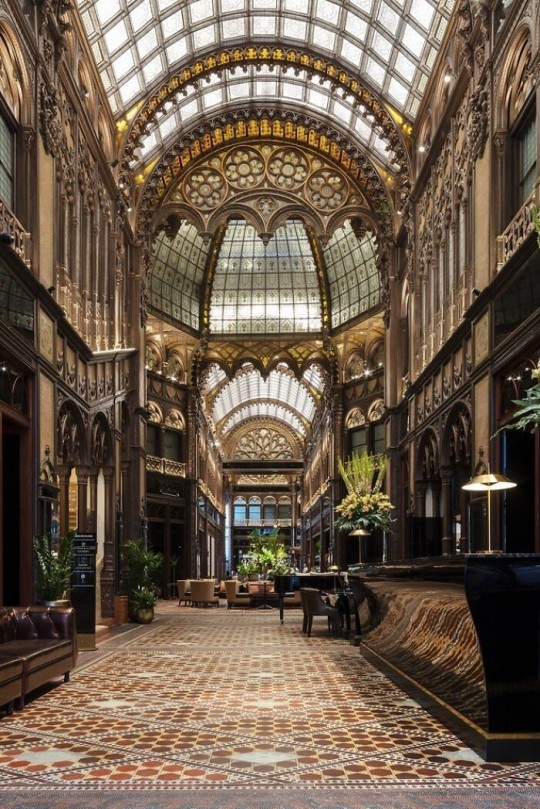
As a followup to the very popular post on architecture, I decided to add onto it by exploring the interior of each movement and the different design techniques and tastes of each era. This post at be helpful for historical fiction, fantasy or just a long read when you're bored.
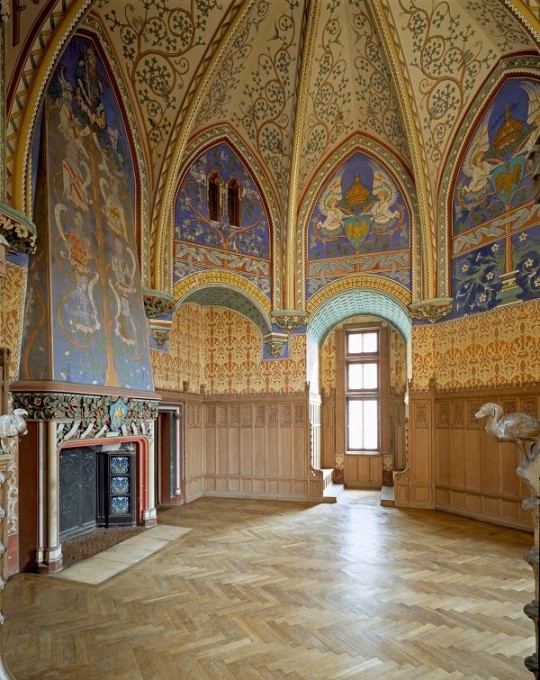
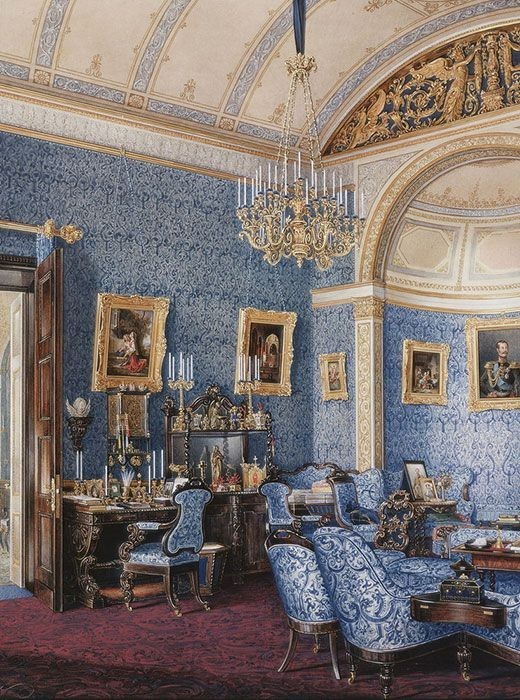
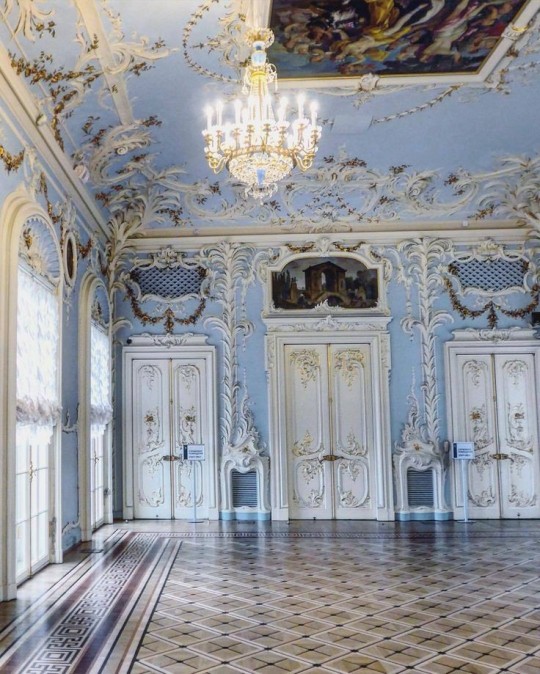
Interior Design Terms
Reeding and fluting: Fluting is a technique that consists a continuous pattern of concave grooves in a flat surface across a surface. Reeding is it's opposite.
Embossing: stamping, carving or moulding a symbol to make it stand out on a surface.
Paneling: Panels of carved wood or fabric a fixed to a wall in a continuous pattern.
Gilding: the use of gold to highlight features.
Glazed Tile: Ceramic or porcelain tiles coated with liquid coloured glass or enamel.
Column: A column is a pillar of stone or wood built to support a ceiling. We will see more of columns later on.
Bay Window: The Bay Window is a window projecting outward from a building.
Frescos: A design element of painting images upon wet plaster.
Mosaic: Mosaics are a design element that involves using pieces of coloured glass and fitted them together upon the floor or wall to form images.
Mouldings: ornate strips of carved wood along the top of a wall.
Wainscoting: paneling along the lower portion of a wall.
Chinoiserie: A European take on East Asian art. Usually seen in wallpaper.
Clerestory: A series of eye-level windows.
Sconces: A light fixture supported on a wall.
Niche: A sunken area within a wall.
Monochromatic: Focusing on a single colour within a scheme.
Ceiling rose: A moulding fashioned on the ceiling in the shape of a rose usually supporting a light fixture.
Baluster: the vertical bars of a railing.
Façade: front portion of a building
Lintel: Top of a door or window.
Portico: a covered structure over a door supported by columns
Eaves: the part of the roof overhanging from the building
Skirting: border around lower length of a wall
Ancient Greece
Houses were made of either sun-dried clay bricks or stone which were painted when they dried. Ground floors were decorated with coloured stones and tiles called Mosaics. Upper level floors were made from wood. Homes were furnished with tapestries and furniture, and in grand homes statues and grand altars would be found. Furniture was very skillfully crafted in Ancient Greece, much attention was paid to the carving and decoration of such things. Of course, Ancient Greece is ancient so I won't be going through all the movements but I will talk a little about columns.
Doric: Doric is the oldest of the orders and some argue it is the simplest. The columns of this style are set close together, without bases and carved with concave curves called flutes. The capitals (the top of the column) are plain often built with a curve at the base called an echinus and are topped by a square at the apex called an abacus. The entablature is marked by frieze of vertical channels/triglyphs. In between the channels would be detail of carved marble. The Parthenon in Athens is your best example of Doric architecture.
Ionic: The Ionic style was used for smaller buildings and the interiors. The columns had twin volutes, scroll-like designs on its capital. Between these scrolls, there was a carved curve known as an egg and in this style the entablature is much narrower and the frieze is thick with carvings. The example of Ionic Architecture is the Temple to Athena Nike at the Athens Acropolis.
Corinthian: The Corinthian style has some similarities with the Ionic order, the bases, entablature and columns almost the same but the capital is more ornate its base, column, and entablature, but its capital is far more ornate, commonly carved with depictions of acanthus leaves. The style was more slender than the others on this list, used less for bearing weight but more for decoration. Corinthian style can be found along the top levels of the Colosseum in Rome.
Tuscan: The Tuscan order shares much with the Doric order, but the columns are un-fluted and smooth. The entablature is far simpler, formed without triglyphs or guttae. The columns are capped with round capitals.
Composite: This style is mixed. It features the volutes of the Ionic order and the capitals of the Corinthian order. The volutes are larger in these columns and often more ornate. The column's capital is rather plain. for the capital, with no consistent differences to that above or below the capital.
Ancient Rome
Rome is well known for its outward architectural styles. However the Romans did know how to add that rizz to the interior. Ceilings were either vaulted or made from exploded beams that could be painted. The Romans were big into design. Moasics were a common interior sight, the use of little pieces of coloured glass or stone to create a larger image. Frescoes were used to add colour to the home, depicting mythical figures and beasts and also different textures such as stonework or brick. The Romans loved their furniture. Dining tables were low and the Romans ate on couches. Weaving was a popular pastime so there would be tapestries and wall hangings in the house. Rich households could even afford to import fine rugs from across the Empire. Glass was also a feature in Roman interior but windows were usually not paned as large panes were hard to make. Doors were usually treated with panels that were carved or in lain with bronze.
Ancient Egypt
Egypt was one of the first great civilisations, known for its immense and grand structures. Wealthy Egyptians had grand homes. The walls were painted or plastered usually with bright colours and hues. The Egyptians are cool because they mapped out their buildings in such a way to adhere to astrological movements meaning on special days if the calendar the temple or monuments were in the right place always. The columns of Egyptian where thicker, more bulbous and often had capitals shaped like bundles of papyrus reeds. Woven mats and tapestries were popular decor. Motifs from the river such as palms, papyrus and reeds were popular symbols used.
Ancient Africa
African Architecture is a very mixed bag and more structurally different and impressive than Hollywood would have you believe. Far beyond the common depictions of primitive buildings, the African nations were among the giants of their time in architecture, no style quite the same as the last but just as breathtaking.
Rwandan Architecture: The Rwandans commonly built of hardened clay with thatched roofs of dried grass or reeds. Mats of woven reeds carpeted the floors of royal abodes. These residences folded about a large public area known as a karubanda and were often so large that they became almost like a maze, connecting different chambers/huts of all kinds of uses be they residential or for other purposes.
Ashanti Architecture: The Ashanti style can be found in present day Ghana. The style incorporates walls of plaster formed of mud and designed with bright paint and buildings with a courtyard at the heart, not unlike another examples on this post. The Ashanti also formed their buildings of the favourite method of wattle and daub.
Nubian Architecture: Nubia, in modern day Ethiopia, was home to the Nubians who were one of the world's most impressive architects at the beginning of the architecture world and probably would be more talked about if it weren't for the Egyptians building monuments only up the road. The Nubians were famous for building the speos, tall tower-like spires carved of stone. The Nubians used a variety of materials and skills to build, for example wattle and daub and mudbrick. The Kingdom of Kush, the people who took over the Nubian Empire was a fan of Egyptian works even if they didn't like them very much. The Kushites began building pyramid-like structures such at the sight of Gebel Barkal
Japanese Interiors
Japenese interior design rests upon 7 principles. Kanso (簡素)- Simplicity, Fukinsei (不均整)- Asymmetry, Shizen (自然)- Natural, Shibumi (渋味) – Simple beauty, Yugen (幽玄)- subtle grace, Datsuzoku (脱俗) – freedom from habitual behaviour, Seijaku (静寂)- tranquillity.
Common features of Japanese Interior Design:
Shoji walls: these are the screens you think of when you think of the traditional Japanese homes. They are made of wooden frames, rice paper and used to partition
Tatami: Tatami mats are used within Japanese households to blanket the floors. They were made of rice straw and rush straw, laid down to cushion the floor.
Genkan: The Genkan was a sunken space between the front door and the rest of the house. This area is meant to separate the home from the outside and is where shoes are discarded before entering.
Japanese furniture: often lowest, close to the ground. These include tables and chairs but often tanked are replaced by zabuton, large cushions. Furniture is usually carved of wood in a minimalist design.
Nature: As both the Shinto and Buddhist beliefs are great influences upon architecture, there is a strong presence of nature with the architecture. Wood is used for this reason and natural light is prevalent with in the home. The orientation is meant to reflect the best view of the world.
Islamic World Interior
The Islamic world has one of the most beautiful and impressive interior design styles across the world. Colour and detail are absolute staples in the movement. Windows are usually not paned with glass but covered in ornate lattices known as jali. The jali give ventilation, light and privacy to the home. Islamic Interiors are ornate and colourful, using coloured ceramic tiles. The upper parts of walls and ceilings are usually flat decorated with arabesques (foliate ornamentation), while the lower wall areas were usually tiled. Features such as honeycombed ceilings, horseshoe arches, stalactite-fringed arches and stalactite vaults (Muqarnas) are prevalent among many famous Islamic buildings such as the Alhambra and the Blue Mosque.
Byzantine (330/395–1453 A. D)
The Byzantine Empire or Eastern Roman Empire was where eat met west, leading to a melting pot of different interior designs based on early Christian styles and Persian influences. Mosaics are probably what you think of when you think of the Byzantine Empire. Ivory was also a popular feature in the Interiors, with carved ivory or the use of it in inlay. The use of gold as a decorative feature usually by way of repoussé (decorating metals by hammering in the design from the backside of the metal). Fabrics from Persia, heavily embroidered and intricately woven along with silks from afar a field as China, would also be used to upholster furniture or be used as wall hangings. The Byzantines favoured natural light, usually from the use of copolas.
Indian Interiors
India is of course, the font of all intricate designs. India's history is sectioned into many eras but we will focus on a few to give you an idea of prevalent techniques and tastes.
The Gupta Empire (320 – 650 CE): The Gupta era was a time of stone carving. As impressive as the outside of these buildings are, the Interiors are just as amazing. Gupta era buildings featured many details such as ogee (circular or horseshoe arch), gavaksha/chandrashala (the motif centred these arches), ashlar masonry (built of squared stone blocks) with ceilings of plain, flat slabs of stone.
Delhi Sultanate (1206–1526): Another period of beautifully carved stone. The Delhi sultanate had influence from the Islamic world, with heavy uses of mosaics, brackets, intricate mouldings, columns and and hypostyle halls.
Mughal Empire (1526–1857): Stonework was also important on the Mughal Empire. Intricately carved stonework was seen in the pillars, low relief panels depicting nature images and jalis (marble screens). Stonework was also decorated in a stye known as pietra dura/parchin kari with inscriptions and geometric designs using colored stones to create images. Tilework was also popular during this period. Moasic tiles were cut and fitted together to create larger patters while cuerda seca tiles were coloured tiles outlined with black.
Chinese Interiors
Common features of Chinese Interiors
Use of Colours: Colour in Chinese Interior is usually vibrant and bold. Red and Black are are traditional colours, meant to bring luck, happiness, power, knowledge and stability to the household.
Latticework: Lattices are a staple in Chinese interiors most often seen on shutters, screens, doors of cabinets snf even traditional beds.
Lacquer: Multiple coats of lacquer are applied to furniture or cabinets (now walls) and then carved. The skill is called Diaoqi (雕漆).
Decorative Screens: Screens are used to partition off part of a room. They are usually of carved wood, pained with very intricate murals.
Shrines: Spaces were reserved on the home to honour ancestors, usually consisting of an altar where offerings could be made.
Of course, Chinese Interiors are not all the same through the different eras. While some details and techniques were interchangeable through different dynasties, usually a dynasty had a notable style or deviation. These aren't all the dynasties of course but a few interesting examples.
Song Dynasty (960–1279): The Song Dynasty is known for its stonework. Sculpture was an important part of Song Dynasty interior. It was in this period than brick and stone work became the most used material. The Song Dynasty was also known for its very intricate attention to detail, paintings, and used tiles.
Ming Dynasty(1368–1644): Ceilings were adorned with cloisons usually featuring yellow reed work. The floors would be of flagstones usually of deep tones, mostly black. The Ming Dynasty favoured richly coloured silk hangings, tapestries and furnishings. Furniture was usually carved of darker woods, arrayed in a certain way to bring peace to the dwelling.
Han Dynasty (206 BC-220 AD): Interior walls were plastered and painted to show important figures and scenes. Lacquer, though it was discovered earlier, came into greater prominence with better skill in this era.
Tang Dynasty (618–907) : The colour palette is restrained, reserved. But the Tang dynasty is not without it's beauty. Earthenware reached it's peak in this era, many homes would display fine examples as well. The Tang dynasty is famous for its upturned eaves, the ceilings supported by timber columns mounted with metal or stone bases. Glazed tiles were popular in this era, either a fixed to the roof or decorating a screen wall.
Romanesque (6th -11th century/12th)
Romanesque Architecture is a span between the end of Roman Empire to the Gothic style. Taking inspiration from the Roman and Byzantine Empires, the Romanesque period incorporates many of the styles. The most common details are carved floral and foliage symbols with the stonework of the Romanesque buildings. Cable mouldings or twisted rope-like carvings would have framed doorways. As per the name, Romansque Interiors relied heavily on its love and admiration for Rome. The Romanesque style uses geometric shapes as statements using curves, circles snf arches. The colours would be clean and warm, focusing on minimal ornamentation.
Gothic Architecture (12th Century - 16th Century)
The Gothic style is what you think of when you think of old European cathedrals and probably one of the beautiful of the styles on this list and one of most recognisable. The Gothic style is a dramatic, opposing sight and one of the easiest to describe. Decoration in this era became more ornate, stonework began to sport carving and modelling in a way it did not before. The ceilings moved away from barreled vaults to quadripartite and sexpartite vaulting. Columns slimmed as other supportive structures were invented. Intricate stained glass windows began their popularity here. In Gothic structures, everything is very symmetrical and even.
Mediaeval (500 AD to 1500)
Interiors of mediaeval homes are not quite as drab as Hollywood likes to make out. Building materials may be hidden by plaster in rich homes, sometimes even painted. Floors were either dirt strewn with rushes or flagstones in larger homes. Stonework was popular, especially around fireplaces. Grand homes would be decorated with intricate woodwork, carved heraldic beasts and wall hangings of fine fabrics.
Renaissance (late 1300s-1600s)
The Renaissance was a period of great artistry and splendor. The revival of old styles injected symmetry and colour into the homes. Frescoes were back. Painted mouldings adorned the ceilings and walls. Furniture became more ornate, fixed with luxurious upholstery and fine carvings. Caryatids (pillars in the shape of women), grotesques, Roman and Greek images were used to spruce up the place. Floors began to become more intricate, with coloured stone and marble. Modelled stucco, sgraffiti arabesques (made by cutting lines through a layer of plaster or stucco to reveal an underlayer), and fine wall painting were used in brilliant combinations in the early part of the 16th century.
Tudor Interior (1485-1603)
The Tudor period is a starkly unique style within England and very recognisable. Windows were fixed with lattice work, usually casement. Stained glass was also in in this period, usually depicting figures and heraldic beasts. Rooms would be panelled with wood or plastered. Walls would be adorned with tapestries or embroidered hangings. Windows and furniture would be furnished with fine fabrics such as brocade. Floors would typically be of wood, sometimes strewn with rush matting mixed with fresh herbs and flowers to freshen the room.
Baroque (1600 to 1750)
The Baroque period was a time for splendor and for splashing the cash. The interior of a baroque room was usually intricate, usually of a light palette, featuring a very high ceiling heavy with detail. Furniture would choke the room, ornately carved and stitched with very high quality fabrics. The rooms would be full of art not limited to just paintings but also sculptures of marble or bronze, large intricate mirrors, moldings along the walls which may be heavily gilded, chandeliers and detailed paneling.
Victorian (1837-1901)
We think of the interiors of Victorian homes as dowdy and dark but that isn't true. The Victorians favoured tapestries, intricate rugs, decorated wallpaper, exquisitely furniture, and surprisingly, bright colour. Dyes were more widely available to people of all stations and the Victorians did not want for colour. Patterns and details were usually nature inspired, usually floral or vines. Walls could also be painted to mimic a building material such as wood or marble and most likely painted in rich tones. The Victorians were suckers for furniture, preferring them grandly carved with fine fabric usually embroidered or buttoned. And they did not believe in minimalism. If you could fit another piece of furniture in a room, it was going in there. Floors were almost eclusively wood laid with the previously mentioned rugs. But the Victorians did enjoy tiled floors but restricted them to entrances. The Victorians were quite in touch with their green thumbs so expect a lot of flowers and greenery inside. with various elaborately decorated patterned rugs. And remember, the Victorians loved to display as much wealth as they could. Every shelf, cabinet, case and ledge would be chocked full of ornaments and antiques.
Edwardian/The Gilded Age/Belle Epoque (1880s-1914)
This period (I've lumped them together for simplicity) began to move away from the deep tones and ornate patterns of the Victorian period. Colour became more neutral. Nature still had a place in design. Stained glass began to become popular, especially on lampshades and light fixtures. Embossing started to gain popularity and tile work began to expand from the entrance halls to other parts of the house. Furniture began to move away from dark wood, some families favouring breathable woods like wicker. The rooms would be less cluttered.
Art Deco (1920s-1930s)
The 1920s was a time of buzz and change. Gone were the refined tastes of the pre-war era and now the wow factor was in. Walls were smoother, buildings were sharper and more jagged, doorways and windows were decorated with reeding and fluting. Pastels were in, as was the heavy use of black and white, along with gold. Mirrors and glass were in, injecting light into rooms. Gold, silver, steel and chrome were used in furnishings and decor. Geometric shapes were a favourite design choice. Again, high quality and bold fabrics were used such as animal skins or colourful velvet. It was all a rejection of the Art Noveau movement, away from nature focusing on the man made.
Modernism (1930 - 1965)
Modernism came after the Art Deco movement. Fuss and feathers were out the door and now, practicality was in. Materials used are shown as they are, wood is not painted, metal is not coated. Bright colours were acceptable but neutral palettes were favoured. Interiors were open and favoured large windows. Furniture was practical, for use rather than the ornamentation, featuring plain details of any and geometric shapes. Away from Art Deco, everything is straight, linear and streamlined.
#This took forever#I'm very tired#But enjoy#I covered as much as I could find#Fantasy Guide to interiors#interior design#Architecture#writings#writing resources#Writing reference#Writing advice#Writer's research#writing research#Writer's rescources#Writing help#Mediaeval#Renaissance#Chinese Interiors#Japanese Interiors#Indian interiors#writing#writeblr#writing reference#writing advice#writer#spilled words#writers
3K notes
·
View notes
Text
reactions to biting them

f in the chat for ring
#ikemen villains#ikevil#ikevil shitpost#ikevil memes#i'm not tagging characters for this one too many#finding the expressions took me forever
542 notes
·
View notes
Text
I really like the Turbo au made by @twinktor-frankenstein so I made smthn :3
this is how I imagined his first step into the arcade went
#art#animation :33#unfortunately the turbo twins did just leave him😭#‘should we help him..?’ ‘..nahh.’#turbo#wir#wreck it ralph#turbo wreck it ralph#wir au#is that a tag#I guess so#restored turbo#rebooted turbo au#:P blehh#it came to me in a dream#took me forever to find the perfect music 😔#anyway I’ll shut up in the tags now#oh yea#turbo twins#almost forgot those tags
453 notes
·
View notes
Text

for @cherryys who (rightfully!) hcs lategame megumi as having a bunch of scars befitting his status as resident punching bag
#my art#jujutsu kaisen#jjk#megumi fushiguro#fushiguro megumi#fanart#jjk fanart#megumi#guess who hasnt slept its meeeeee#finding refs fr this took forEVER#mostly bc all the pinterest boys are too gd beefy to use as megu ref#but even once i found good refs i am so used 2 drawing beef!!! so used 2 shirtless torsos tht look like yuuji's!!!!#had to keep Undefining my lines n slimming him down#n then he didnt look toned enough!!!!!!!!#constant too hot/too cold . endless suffering .#bangs head on desk all i know to draw is BEEF and this boy is 100% sinew........#but we got there . th render helped a LOT#but then right back 2 suffering bc i asked sam fr Scar Recs n they had th idea 2 give him a lightning scar from when he was taming nue#and i was like omg ya!!!! (voice of some1 who did Not know what lightning scars look like)#so to say i looked them up and uh . new least favourite thing 2 draw just dropped :)#th more accurate i tried to be the more it looked like a weird artsy tattoo#n that scar wasnt even part of what cherryys mentioned they envisioned !!! optional hurdle !!!!!!! i torture myself but fr naught!!!!#th scars tht they mentioned are the glass eye/eye scar from th sukuna/gojo fight + burns up the jaw + abdomen stab wound a la toji#everything else is just visual flavour#sighs at least i got some good shameless torso practice out of this#once i got 2 painting i took my sweet time with him and i am happy now . sleep deprived but happy <3#one of my megumi mutuals(tm) says jump i say how high
647 notes
·
View notes
Text
the place me and my roommate were supposed to move into today was so disgusting and uninhabitable we just took our stuff and left and now we're gonna be staying at airbnbs and hotels until further notice/until we can find a new place hopefully quickly...........im in my homeless drifter era y'all!!!😍😍so if im not as active then thats why LMFAO

1 like = 1 prayer
#bro was literally trying to rent us a silent hill apartment#we already paid first and last too which was 2700k and he said hes not gonna refund us EVEN THO WE DIDNT EVEN MOVE IN!!#like first month i get BUT NOT EVEN THE SECOND MONTH?? all landlords go to hell#looking back at the og listing like.....yeah i can see why he never took pics of the outside......literally looks like a landfill😃#we're SO LUCKY that uhaul allowed us to keep our things stored with them bc if they insisted on our shit still being dropped off#we woulda been so screwed/forced to move in and then would have had to hire ANOTHER uhaul to move back OUT lol#AND I HATE MOVING the idea of unloading all of our stuff just to pack it again literally makes me wanna perish#but even tho i may be a homeless drifter rn that wont stop me from also working on my oneshot between searching for places😍#the oneshot has a smut scene at the beginning LMAO and smut takes me forever to write so id been putting it off#but now that im over that hump (pun intended) i think ill be faster now brrrrrrrrrrr 9k words so far#its probs gonna be like 40k LMFAO maybe longer... idek#but also ill be hella busy trying to find a home so LMFAO who knows...chat im so fucking TIREDDDDD🧎♀️🧎♀️#my moms trying to see if she can fight him and get our money back but it aint lookin good bros#if i randomly open commissions then youll also know why LMAO
378 notes
·
View notes
Text

#psychonauts#dr loboto#caligosto loboto#rhombus of ruin#i had to find the post it took. forever.#gnashing of teeth
830 notes
·
View notes
Text


#chikorita#bald#and WELCOME TO GEN 2!! feels like we only just started with the new blog theme and yet here we are in gen 2 already#i remember back when it was still front-facing pokémon‚ it felt like it took FOREVER to get through a generation. but here we are#blitzing through gen 1. maybe it's just because i find a majority of gen 1 pokémon designs to be boring and uninteresting#so it flew by like that. but now we're starting to get into the guys i like#and this thing. well. this pokémon is divisive‚ to say the least#i feel like it's a love-it-or-hate-it type design#folks either hate the bean-shaped head and how it has No snout and its face is all flat#or they love it and think it's adorable#i think it's cute. tbh. i used to not like it#but it's kind of a silly creature and i like that about it#i've come around to it in recent years. especially since i think bayleef and meganium have much nicer designs
244 notes
·
View notes
Note
hi what was that one time loop tried to kill the king
I mentioned it in my Very First Post for this au. What happened was that, in the first weeks of Loop being sent to the past and staying around the weaker version of the man that ruined their life, they decide to neutralize any chance that King will end up on the same path by, well, killing him. They failed, of course (had a last-second change of heart and couldn't bear going through with it), but their relationship got a bit shaky after that.

#it never happens au#isat au#in stars and time#isat#in stars and time spoilers#isat spoilers#isat king#isat the king#king isat#the king isat#pre wish king#isat loop#loop isat#wow it took forever to find a decent pose reference for this one#anyways <3 i love violence <3 i love angst <3
221 notes
·
View notes
Photo

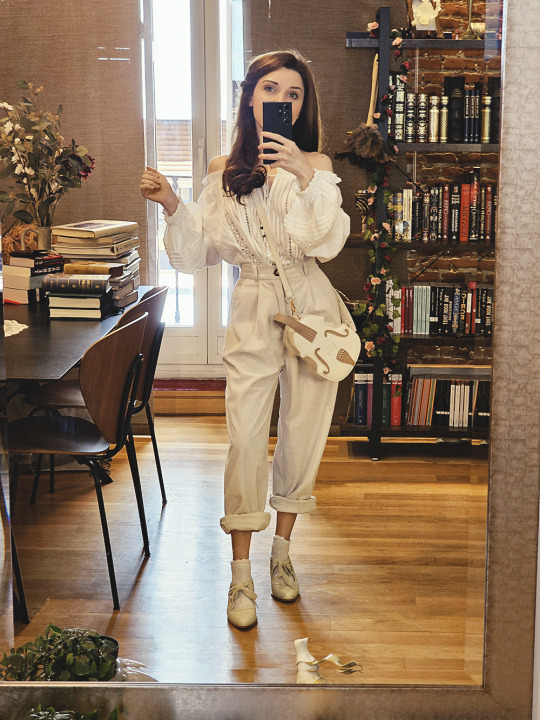

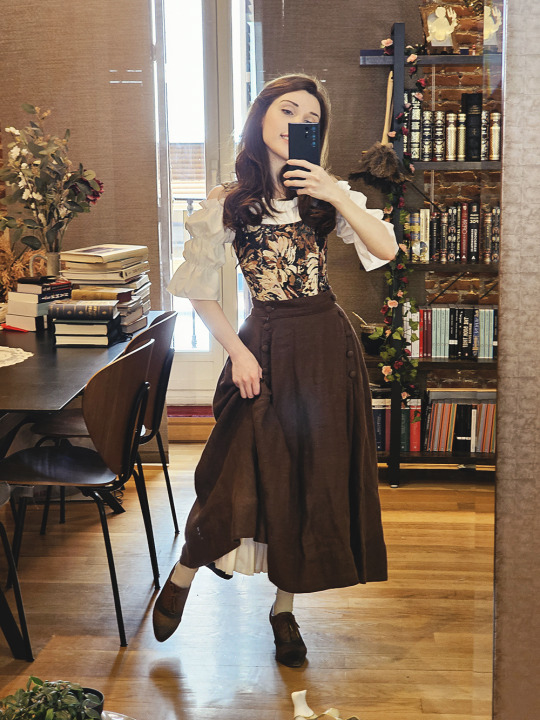
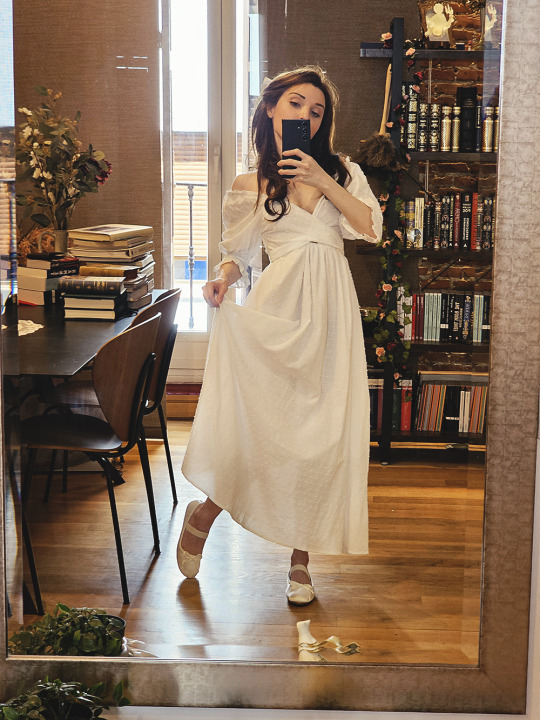

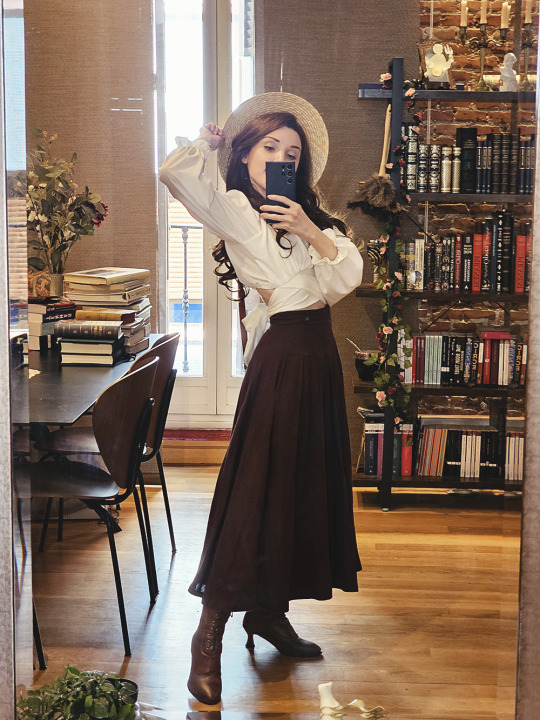


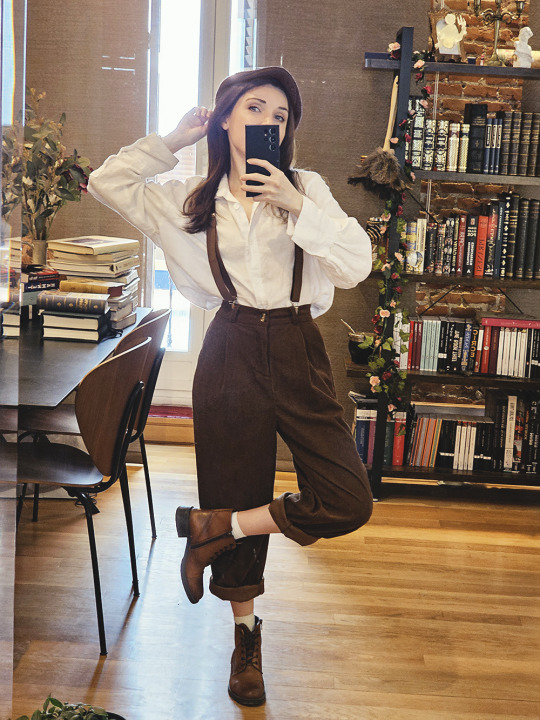
Another outfit showcase! this time for spring-summer 🥰
#nips photos#personal#this set took forever because I'm a summer hater and find it so hard to make outfits I won't boil to death in#you may say Natalia these just look like more autumn outfits and to this I say spring is just allergy autumn and summer is sweaty autumn#and I also happen to dislike pretty much any color on me so bear with me#I have a few more ideas that didn't fit in the post so I may do another later#the pretty curls are removable hair extensions btw and the shops I buy from are the same as my last outfit post!#nips blogs
2K notes
·
View notes
Text

#dropout#very important people#vic michaelis#it took me forever to find a good post for this image but i think this is good. tbh
268 notes
·
View notes
Text
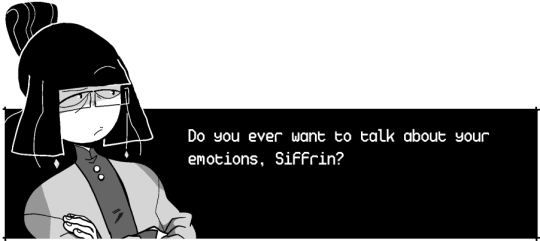



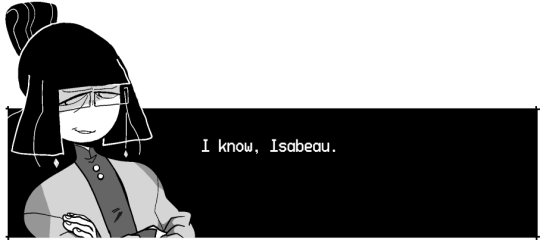

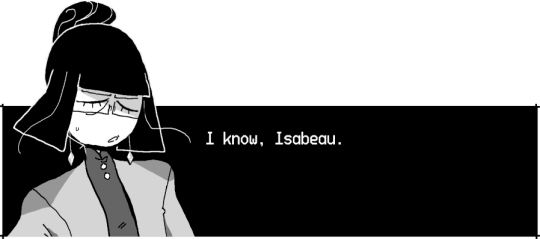
this was my favorite part :)
inspo [x]
#in stars and time#isat memes#isat siffrin#isat odile#isat isabeau#it took me forever to find a font similar to the game text#thank you isat wiki for the portraits i will treasure them#i considered using mira instead of dile for this but this just felt more in character for dile
1K notes
·
View notes
Text
splatoon promo kids name list cause its always a pain to try to look for them for me personally and i realized. i could change that!
NOTE: weapons are ALWAYS inconsistent with the promo kids. their names may be assigned to different models as well. their first appearance is what they are usually seen as, and whatever weapon they "main" are based on renders/what they use in trailers.
SPLATOON 1
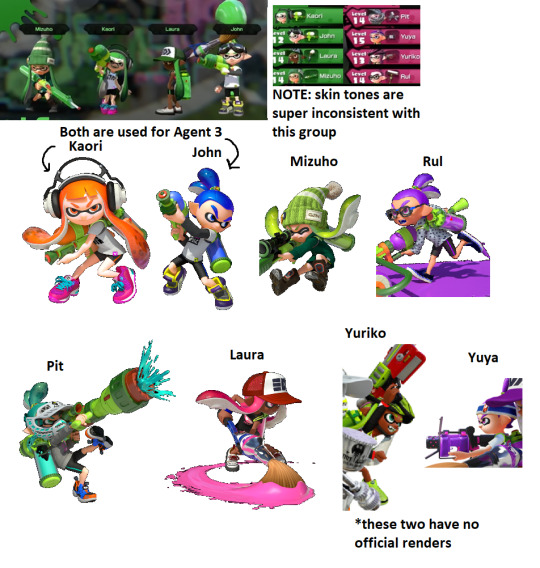
The skin tones are very inconsistent with everyone pictured.
TOP ROW: Kaori, John, Mizuho, Rul
BOTTOM ROW: Pit, Laura, Yuriko, Yuya
Kaori and John are the "Agent 3"s. Yuriko and Yuya do not have official renders.
SPLATOON 2

The skin tones are inconsistent, mainly with those with darker skin tones (unfortunately).
TOP ROW: Surume, Cuttlefrsh (Cuttlefresh in the earliest known trailer), Kou, Kensaki
BOTTOM ROW: KelpShot, Splashley, Tof-U, Yari
Surume and Cuttlefrsh are the "Agent 4"s, though Cuttlefrsh/Male Agent 4 is only ever depicted once (discounting coroika). Yari does have a transparent render, I just prefer the one with the roller (though, I wish I could find the transparent version of it).
OCTO EXPANSION (bonus)

BONUS: even though the renders used to represent Agent 8 are wildly inconsistent, there's two regular octoling renders that people believe are linked to them. Their names come from Octolings that look very similar to them in the offline version of the lobby. (Patricia and Steven). Sometimes Patricia is referred to as Naomi due to misinfo. They're like, promo kid adjacent to me.
SPLATOON 3 (the most popular and consistent)

VeronIKA and TakoTruck's skintones are inconsistent :(
Eyecolors for VeronIKA, Hirooooo, and AnemoneNo1 are inconsistent
TOP ROW: VeronIKA, Hirooooo (five o's), AnemoneNo1, TakoTruck
BOTTOM ROW: Stephanie, kAyOss (the k is not meant to be capitalized im dumb, image is inaccurate), C4L4M4R, YARRwhal
VeronIKA and Hirooooo are the "Neo Agent 3"s (though, Hirooooo is only used once for the artbook)
There is also an instance where Hirooooo's name is misspelled (only four o's) but i didnt want to find the image
BONUS
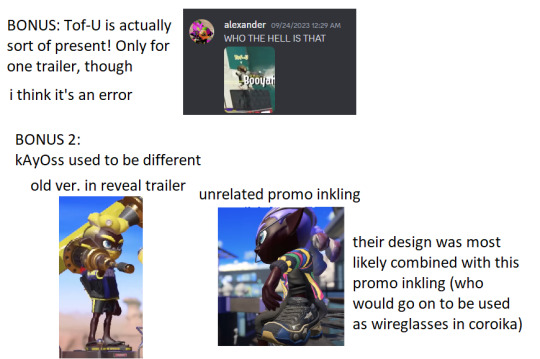
Tof-U is technically present in one of the gameplay showcases(?) I believe it's an error
kAyOss used to look different and was most likely combined with the unrelated promotional character shown next to them (who was used for Wireglasses/Glassless in Coroika)
okay thats all! I'll reblog and add on any additions if necessary
#rambling#splatoon promo kids#alex's promo kid hell#GOD. this took forever#there's also more splatoon 3 offline lobby characters but!! i didnt feel like finding them at this very moment#anyway... promo kids am i right *explodes*#splatoon#splatoon 2#splatoon 3
441 notes
·
View notes
Note
#all i know is he’s funny dutch and loves giving his wife head
.................i'm sorry???????? i'm gonna NEED you to expand on that please 😭

#alhdjsks this took me forever to find i could not remember why i knew that#i think he’s said something more recently too but i can’t remember#asks
222 notes
·
View notes